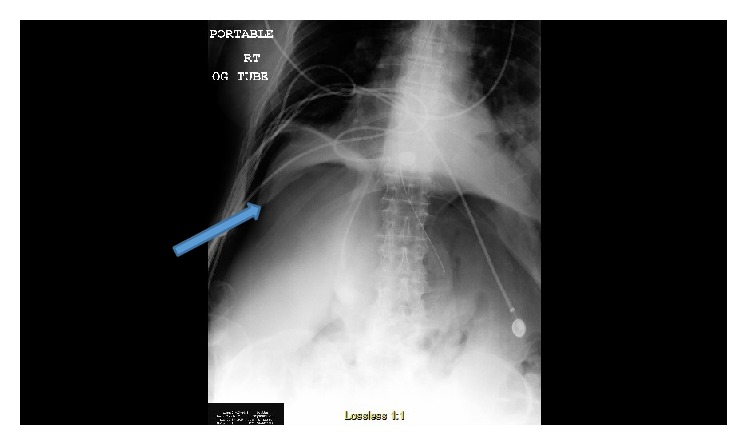Playlist
Show Playlist
Hide Playlist
LABA/LAMA Combination vs. Monotherapy
-
Slides COPD ChronicCare.pdf
-
Download Lecture Overview
00:01 So, that study would suggest that the long-acting muscarinic antagonist (LAMA) was superior to the long-acting beta agonist (LABA). 00:10 And this is a Cochrane review of five different randomized trials looking at that same issue – tiotropium alone versus tiotropium plus a LABA. 00:21 And combination was slightly better for health-related quality of life and FEV1. 00:25 So, adding the LABA to the LAMA gives a mild improvement in symptoms and FEV1, but it doesn't improve mortality, the rate of exacerbations, symptom scores, serious adverse events or study withdrawal. 00:42 So, therefore, maybe not worth it to add a long-acting beta agonist to an existing drug like tiotropium for most patients because the benefits aren't really that strong. 00:55 What about inhaled corticosteroids? So, let’s go back to another Cochrane review. 00:59 So, this is 55 randomized trials of patients with COPD, over 16,000 participants. 01:05 The main improvement is a moderate reduction in the number of exacerbations per year and a slower reduction in quality of life among patients who take corticosteroids. 01:16 The improvement in FEV1 is pretty questionable with inhaled corticosteroids. 01:22 And really, these drugs, inhaled corticosteroids, are most effective for patients with moderate to severe COPD, not for patients with mild COPD. 01:30 No, they don’t improve mortality. 01:32 There is some risk of oral candidiasis and a higher risk of pneumonia in these studies as well. 01:39 But the inhaled corticosteroids had no negative effects on bone after following up for three years of use. 01:47 So, let's look at what the global initiative says in terms of recommendations. 01:52 So, for short acting drugs, they don't really prefer a beta agonist versus an anti-muscarinic agent, but they note that long-acting drugs, either a LABA or a LAMA are better for symptom relief. 02:09 So, try to use long-acting drugs for control. 02:14 Bronchodilators, they are long-acting. 02:16 Also reduce the risk of exacerbation, hospitalization and they improve quality of life. 02:22 They conclude that that LABA/LAMA combination is probably better than just increasing the single agent alone. 02:29 For me, I start with that long-acting muscarinic antagonist, the LAMA. 02:36 And if the patient is not doing well enough on that, I will add the LABA on top of it in combination. 02:44 As I mentioned, the inhaled corticosteroids can reduce the risk of exacerbation, particularly among those with a low FEV1. 02:54 And they felt like they were more positive overall on the use of inhaled corticosteroids compared with Cochrane. 03:03 So, they wanted them used more broadly even though they only have moderate effects in reducing the risk of exacerbation. 03:10 They should not be used alone, though. 03:12 So, if they're used, inhaled corticosteroids should only be used when combined with a LABA or a LAMA. 03:20 All right. That was a lot to get through. 03:22 But the take-home messages are, make sure these patients get spirometry, differentiate asthma from COPD with the understanding that there can be some component of both in many patients. 03:34 Quitting smoking at any stage of COPD before diagnosis or after diagnosis is absolutely critical. 03:42 And think about using these long-acting muscarinic antagonists. 03:47 They seem to be slightly superior, but they can be combined with LABAs, they can be combined with inhaled corticosteroids among patients with more severe COPD. 03:58 Thanks very much.
About the Lecture
The lecture LABA/LAMA Combination vs. Monotherapy by Charles Vega, MD is from the course Chronic Care.
Included Quiz Questions
Which of the following drugs is the mainstay of therapy for stable COPD?
- Inhaled bronchodilators
- Oral bronchodilators
- Inhaled corticosteroids
- Oral corticosteroids
In the treatment of COPD, which of the following statements regarding inhaled corticosteroids is MOST ACCURATE?
- They are not recommended as monotherapy.
- They increase rates of non-small cell lung cancer.
- They significantly increase the risk of osteoporosis.
- They are best used in patients with mild to moderate COPD.
- They are the mainstay of treatment.
Which of the following is the most appropriate therapy for a COPD patient who is hospitalized for a second exacerbation over the past year?
- A long-acting muscarinic antagonist with a long-acting beta agonist
- Short-acting beta agonist only
- A long-acting beta agonist with a short-acting beta agonist
- An inhaled corticosteroid
- An oral corticosteroid
Customer reviews
5,0 of 5 stars
| 5 Stars |
|
5 |
| 4 Stars |
|
0 |
| 3 Stars |
|
0 |
| 2 Stars |
|
0 |
| 1 Star |
|
0 |




